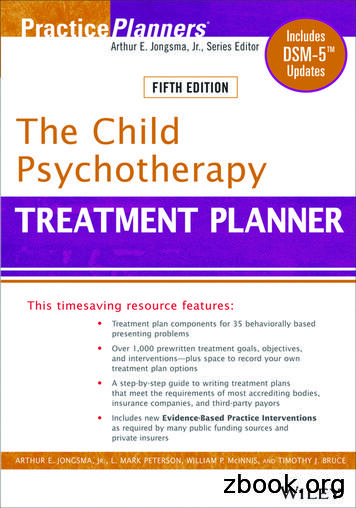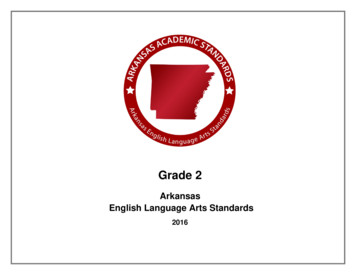Urban Planner: MIHAI ALEXANDRU – Research Proposal – June
Cătălina IONIȚĂArchitect, MscUrb, PhD (expecting 2014)Affiliation: University of Architecture and Urban Planning ‘Ion Mincu’ of Bucharest, Romania(UAUIM) http://www.uauim.ro/en/Contact: catalina.ionita@yahoo.comResearch working title:A new meaning for the organic. The morpho-ecological approach of the organic city1U H Open Call october 2011
A new meaning for the organic. The morpho-ecological approach of the organic cityThis research proposal introduces and elaborates a specific approach to urban designbased on a redefinition and re-evalutation of the concept of ‘organic’ in a morpho-ecologicaland parametrical paradigm, assumed to unveil new ways of understanding and “planning” thecity.The mechanization of various practices across the full spectrum of planning, production,processing, disseminated through consumption has made the purely formal planning of the 20 thcentury, to have as result cities that many critics now consider over-determined. As they are toomuch the embodiment of one idea, too much the product of one system, too much the reflectionof one moment in time and too inflexible, they have driven the city planning in a real crisis, thecrisis of the planned city.Architects and planners have always been forced to work with mechanical thoughtsystems -simplified models of the city that imposed clear hierarchies, clear Cartesiangeometries and the division of the parts and the whole, otherwise said: an order in dissonancewith the complexity of the real city. This reductive way of thinking and working with the citybrings forth important side effects in terms of ecology (pollution), social life (segregation andalienation), as well as being today in the center of the debates about the durability of the city.Taking Latour's position, in the transition from the design based on matter of facts to thedesign based on matter of concerns, I build my current research on the belief that the objects thatare surrounding us, the architecture and the cities we live in, aren't only material and objective,but with the help of the designers they can effectively participate to the urban life as actors - ashybrid beings. In our days, the awareness of the impact of urbanization on the environmentseems to change the lens through which we look at the world, shifting from an external view to2U H Open Call october 2011
an internal one, towards a perception of a smaller world in which matters of concern like interconnection and the co-existence become important. In this new view, the nature isn't thatsomething vast and unreachable exterior to us and thus, architects and urban planners seem tomove their interest from modernization to ecologization. (Latour, 1998). The nature and humanaction are therefore unseparable because there is no outside (Sloterdijk, 2004), but only people,objects, technology and nature combined in a complex network of hybrid nature.For a new organic approachHuman beings have a history because they transform nature. It isindeed this capacity which defines them as human. Of all theforces which set them in movement and prompt them to invent newforms of society, the most profound is their ability to transformtheir relations with nature by transforming nature itself (MauriceGodelier, 1986, The Mental and the Materia).The majority of the historical cities are puzzles of fragments of premeditated andspontaneous arrangements, variously interlocked or juxtaposed. The two urban forms are alwaysin a contiguous relationship; they metamorphose themselves making difficult theirunderstanding. (Kostof: 1991). The reworking of prior geometries over time leaves urbanpalimpsests that make cities ‘the result of a self-renewing power of design’ (Braunfels: 1988).‘To say that everything has to be designed and redesigned (including nature), we implysomething of the sort: it will neither be revolutionized, nor will it be modernized’.(Latour:2008)The typically modernists' separation of materiality and design is slowly being surpassed; themore objects are turned into things, the more ‘matters of facts’ are turned into ‘matters ofconcern’. In this context, cities can be described as a hyper object, a hybrid emerged from thepartition of our thought into different disciplines, a monstrous explicit environment (Sloterdijk)emerged out of our theoretical approaches which can be understood only through a similar,organic approach following Gideon's assertion that only the organic can adapt to the organic(Mechanisation Takes Command).3U H Open Call october 2011
In an extensive look through a sociological and philosophical lens, the city of today, thishybrid, hyper object, is characterized by an increased rate of change, it presents a powerfulindividualization of its social component, an ‘instantaneous world‘. (Ascher: 2005), wherebecause of the increased connectivity in the virtual space the inhabitant will live in connectedisolation’1 (Sloterdijk: 2003) and where the mass production is replaced by the ‘masscustomization’2 (Stan Davis: 1996), a city in which the social contacts are visibly moving in thevirtual space inducing a severe weakening of the urban space.A new type of urban agglomeration made of multiplied, heterogeneous and discontinuousspaces and relationships produced by urban entities that are increasingly more loosely linked interms of hierarchy and, progressively associated with dislocated and fluctuated dynamicsconstitutes the contemporary ‘metapolis’3 (Ascher: 1995). The city is now a place of places,where numerous urban models coexist, each with its own qualities that make it different from therest, an elastic and vibrant system defined by relationships between movements and events whichare simultaneously interlinked and autonomous. A system that is similar - generic or recurrent on a global scale and diversified – specific – scale - on a local scale. (Ascher: 1995) This newway of considering the city, not like an independent entity, but like an element in many networksbrings forward a shift in the thinking about the city from the formal perspective to the processperspective, from the finite and defined towards the evolutionary.In a time when flocks of fashionable metaphors swarm the domains of architecture andurban planning, this approach tries to raise the question of the organic as a method or as ametaphor? by situating the organic concept in a historical-materialist perspective that might offera view of the "production of nature" that is more receptive to change, conflict and the evolutionprocesses. By employing the thought image of the foam (Sloterdijk), this approachsimultaneously surpasses the modernist binary interpretation of the world into two spheres, asocial and a natural one, in dealing with a hybrid nature that follows the path opened by theJapanese Metabolists.Peter Sloterdijk in his spherological theory uses the term “connected isolation” to define the condition of the manin the space seen as a imune system. The term was first used by the american architect Thom Mayne (Morphosis).2Stan Davis:1996 in Future Perfect and defined by Tseng & Jiao in 2001 as the production of goods and servicesaccording to individual wishes with almost the same efficiency as mass production.3The term “metapolis” introduced by the French sociologist Franchois Ascher, defines the new multiple andmultifacetated dimension of the contemporary city.14U H Open Call october 2011
Illustrations:Louisiana Cloud- Sou Fujimoto (architect). From a furniture-like scale, todwelling, and grand architecture to city-scale, the foam model projectspossibilities across diverse scales - pictures from the Living exibition –Catalina Ionita personal archive.„ LIVING” exibition, presented in the series FRONTIERS OF ARCHITECTURE IIIIV, 1 June - 2 October 2011 at the Louisiana Museum of Modern Art, Copenhagen,http://www.louisiana.dk/uk; The cubes presented in the section Cells/Networks are built up as acell structure, each of which represent a type of dwelling, a way of living. The cubes tell a storyof personal choices, new building types, architectural visions and artworks, each of wich reflectsthe way we live and dwell today.” This exhibition, curated by Kjeld Kjeldsen, centers on the waythe development of the lifestyles and dwellings of the present and future draws on anthropology,which deals with human social behavior and mankind’s self-perception.5U H Open Call october 2011
Model of the Total Exhibition Structure, ‘Living City, - Reproduced in Sadler,Simon, (2005), Archigram : architecture without architecture pp.55The Archigram group brought to the world ‘a vision of the city as an environmentconditioning our emotions’ (Living Arts, no. 2), ‘Living City’, presented under the form of amanifest-exhibition in 1963. A manifesto for their belief ‘in the city as a unique organism’,which is more than a collection of buildings, but a means of liberating people by embracingtechnology and empowering them to choose how to lead their lives.(Sadler, 2005)left: Agricultural City Plan, Kisho Hurokava, 1960right: Masdar City – Abu Dhabi, Foster Partners, 20066U H Open Call october 2011
References:Ascher, François. (1995). Metapolis ou l’avenir des villes, Paris, ed. Odile Jacob.Ascher, François. (2005). La société hypermoderne : Ces événements nous dépassent, feignonsd'en être les organisateurs; Ed. de l’Aube.Kostof, Spiro. (1991). The City Shaped-Urban Patterns and Meanings Through History,Ed.Thames & Hudson, Hong Kong.Latour, Bruno. (1998). "To modernise or ecologise? That is the question". In Remaking reality:nature at the millenium [sic] (eds) B.Braun &N.Castree, 221-42. London:Routledge.Sadler, Simon, (2005), Archigram : architecture without architecture, Massachusetts Institute ofTechnologySassen, Saskia. (2007). A Sociology of Globalization, W.W. Norton &Company Ltd, London.Sloterdijk, Peter. (2006). Sphères : Tome 3, Ecumes, Sphérologie plurielle, Hachette Littératures.7U H Open Call october 2011
The morpho-ecological approach of the organic city . systems - simplified models of the city that imposed clear hierarchies, clear Cartesian . forms of society, the most profound is their ability to transform their rel
The Behavioral Medicine Treatment Planner The Group Therapy Treatment Planner The Gay and Lesbian Psychotherapy Treatment Planner . Psychotherapy Treatment Planner, 3rd Edition, The Child Psychotherapy Treatment Planner, 3rd Edition, and. The Addiction Treatment Planner, 2nd Edition.
Urban Design is only is 85; there is no application fee. Further information and application form see the UDG website www.udg.org.uk or phone 020 7250 0892 Urban Degsi n groUp Urban U Degsi n groUp UrBan DesiGn145 Winter 2018 Urban Design Group Journal ISSN 1750 712X nortH aMeriCa URBAN DESIGN GROUP URBAN DESIGN
Universitatea Alexandru Ioan Cuza” din Iași . Lucian Berechet, Florin Frumos, Liviu George Maha, Alexandru Ioan Cuza University of Iasi, "Effective informations" against "Incomplete informations", published in Proceedings of ICVL 2014 (ISSN 1844-8933, ISI Proceedings) - the 9th . International Conference Institutional Strategic Quality .
The EUROPEAN WEEK at ”Alexandru Ioan Cuza University” of Iași PROGRAMME Friday, 11 MAY 2012 09.30 – 10.00 Registration, Senate Hall, Building A 10.00 – 12.00 Opening - Senate Hall, Building A Opening Speech: Gabriela Carmen PASCARIU, Director of the Centre for European Studies Alexandru Florin PLATON, Executive director of the Centre for European
The College Student Counseling Treatment Planner The Parenting Skills Treatment Planner The Early Childhood Intervention Treatment Planner The Co-Occurring Disorders Treatment Planner The Complete Women’s Psychotherapy Treatment Planner The Veterans and Active Duty
The Behavioral Medicine Treatment Planner The Group Therapy Treatment Planner The Gay and Lesbian Psychotherapy Treatment Planner . Several of the Treatment Planner books now have companion Progress Notes Planners (e.g., Adult, Adolescent, Child, Addictions, Severe and Persistent Mental Illness, .
What is Apps4.Pro Power BI Connector for Microsoft Planner ? It is an Edge extension which connects Microsoft Planner to Power BI. With this connection you can create powerful dashboards for your Planner plans. This extension offers Schedule sync - Sync Planner data to Power BI at regular intervals Plan picker –Select plan which is to .
Grade 2 must build on the strong foundation of Grades K-1 for students to read on grade level at the end of Grade 3 and beyond. Arkansas English Language Arts Standards Arkansas Department of Education























